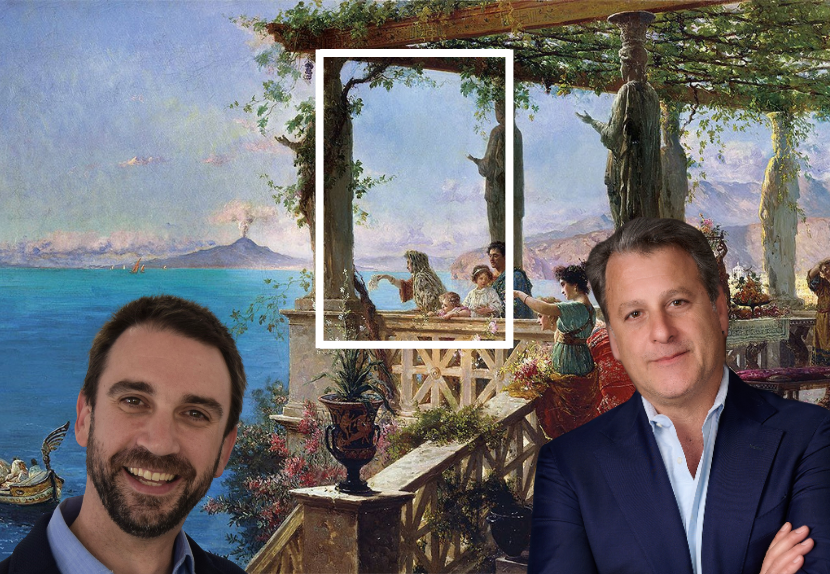
EXCLUSIVE WEBINAR “Campania Felix”
Presented by Esteban Nigro
Date & Time:
Thursday, December 12, 2024
2:00 – 3:00pm ET | 11:00am – 12:00pm PT |
7:00 – 8:00pm London
EXCLUSIVE WEBINAR | “Campania Felix”
Presented by Esteban Nigro
Magna Graecia is the name given in Antiquity to the territory occupied by Greek settlers in the south of the Italian peninsula and in Sicily in the 8th century BC. And just as we all sometimes must name things provisionally, the Greeks also initially called many new cities “neapolis,” which means “new city.” Over time, almost all of them would find a definitive name, except for Naples, which may still be working on it…
A few centuries after Greek foundation, in the 4th century BC this same territory was occupied by the Rome, which began to call the entire region of Naples Campania Felix. And why call a region “happy?” Well, because of its great fertility! All the land was fertile, and cereals, fruits and vegetables grew wonderfully. Even the slopes of nearby Mount Vesuvius teemed with vineyards that produced wines famous throughout the ancient world.
Little by little the Campania Felix was chosen by the most illustrious Romans to lead a life of otium (“rest”) during the summer. They were so amazed by the region that they even coined a term to describe their stay in it – pergraecare, a Latin word meaning “living the Greek way.” In such a mild climate, they could spend weeks wearing only light tunics and sandals. But not everything was rosy in that region of pleasure. The lands were fertile due to the presence of volcanic ash rich in minerals that descend from the sky every few hundred years. And unfortunately, that geological spectacle occurred in the year 79 AD when the Romans found out that what they believed to be a harmless Mount Vesuvius full of vineyards, turned out to be something very different. Apart from the Etna volcano in Sicily, the Romans were unaware of the existence of other volcanoes to such an extent that there is no term in Latin to designate them. Fortunately for Naples the eruption of Vesuvius was not as serious as it was for the nearby city of Pompeii where it is estimated that 5,000 people died. The Romans had come to know the dark side of that “happy region.”
The webinar will include a 45-minute lecture followed by 15-minutes of Q&A.
Please note:
Esteban Nigro is a geologist and cultural heritage tour guide, passionate about discovering history in the same place that it happened. He earned his degree in Geology from the University of Buenos Aires in 2008 and went on to study Industrial Engineering for 2 more years. After several years working as a geophysicist for Petrobas and Pampa Energia, Esteban began leading geological tours in Italy (Milan, Florence, Pisa, and the general Tuscany region) and Argentina (Buenos Aires).














